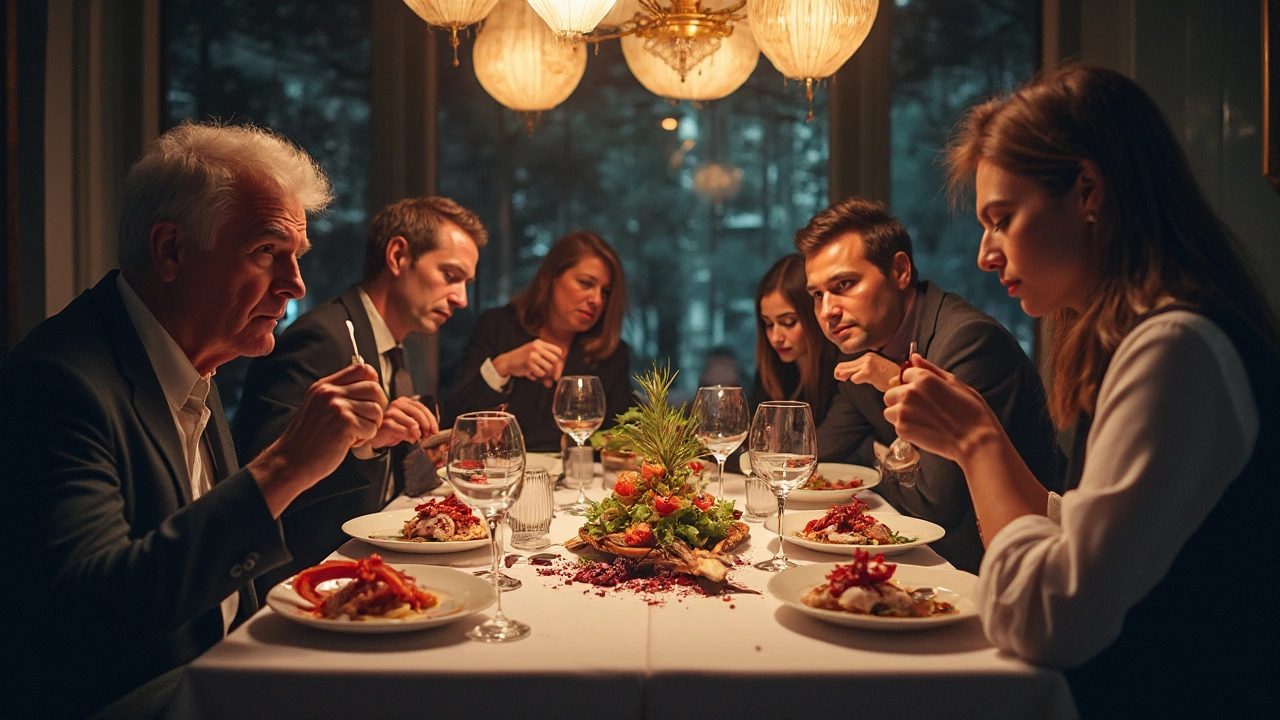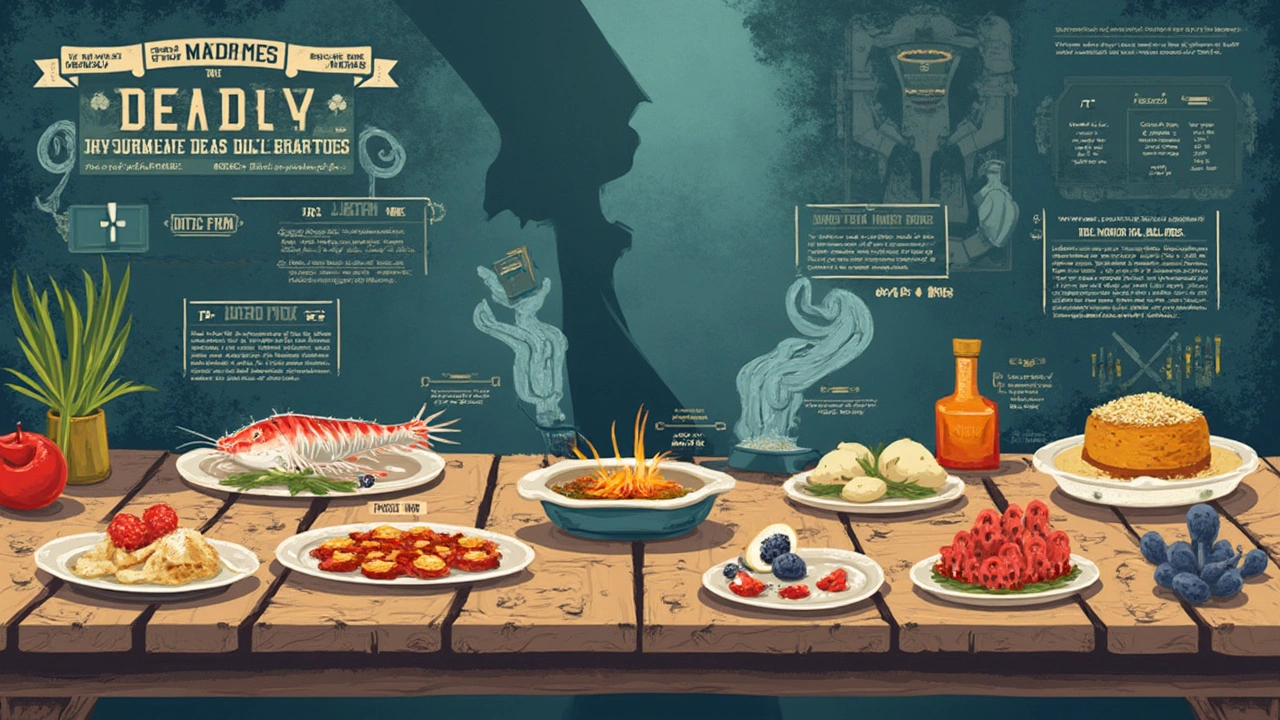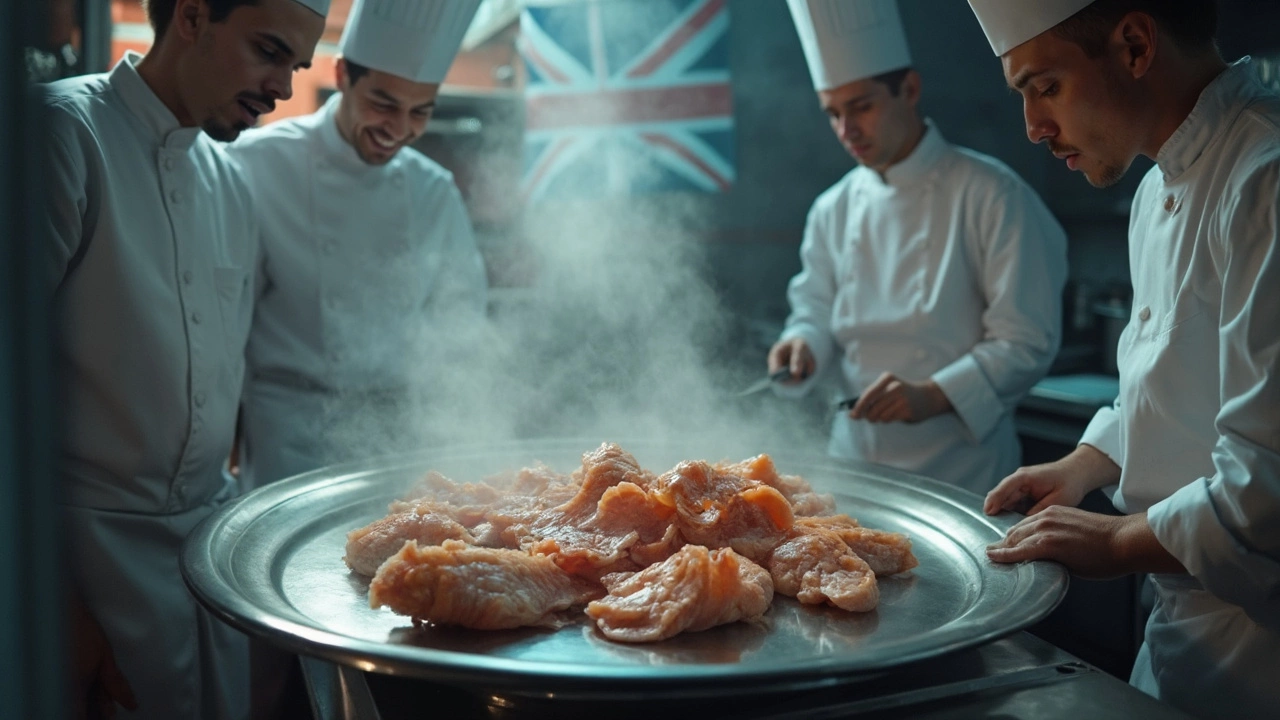Your average dinner plate doesn’t come with a side of anxiety. But in some kitchens, a chef’s next move could literally mean life or death. Around the world, one dish causes experienced cooks to sweat bullets and thrill-seekers to sign liability waivers: fugu, the infamous Japanese pufferfish. One wrong cut, and it’s game over—fast. But fugu isn’t alone. There’s an exclusive club of foods that terrify even the bravest in the business. Let’s pull back the curtain on what makes these dishes so dreaded.
The Fugu Phenomenon: Deadly Precision on a Plate
Imagine paying top dollar for dinner with potentially lethal consequences. That’s exactly what happens in fugu restaurants across Japan, where a single pufferfish contains enough tetrodotoxin to kill thirty people. This isn’t just some urban legend; the Japanese Ministry of Health keeps official records each year of fugu-related poisoning cases. A 2019 report showed that about ten people are poisoned annually, usually amateurs giving home preparation a whirl. Chefs who serve fugu train for at least three years, must pass a government exam, and, even then, not every province allows fugu to be sold. The catch? There’s no antidote to tetrodotoxin poisoning, just supportive care and a mad dash to the ICU.
The thrill of eating fugu, for some, is all in the risk. Thin, translucent slices—the famed sashimi—are arranged artfully, looking like delicate chrysanthemum petals. People describe the flavor as subtle and clean, but nobody orders fugu for taste alone. It’s about the dare, the trust in the chef, and the folklore. Some even claim that expert preparation leaves just enough toxin to offer a tingling sensation—a myth, really, but it adds to the mystique. Even in Japan, not everyone has tried fugu. Many locals skip it entirely, wary of past incidents and the dish’s high cost—a single meal can cost hundreds of dollars.
The respect for fugu in the kitchen is serious. Japanese chefs take oaths, face unannounced inspections, and often keep antidote kits on hand for panicked guests—though, like I said, true antidote isn’t available. Even prepping fugu for cooking is an ordeal. The chef must remove the liver, ovaries, blood, and skin without piercing the tiny sacs of poison. Disposal is strictly regulated; leftovers are considered hazardous waste.
Want to see just how much can go wrong? Here’s a quick breakdown of risks:
| Step | Danger |
|---|---|
| Incorrect cleaning | Spread of toxin to edible parts |
| Piercing the liver | Immediate contamination |
| Improper waste disposal | Harm to the environment or workers |
Here’s a tip: if you’re in Japan and craving an adventure, pick a reputable restaurant. Japan bans amateur fugu prep for obvious reasons, yet every New Year, poisonings spike as daredevils try their luck. Time and again, authorities remind: ‘Leave it to the licensed pros.’ It’s one dish where DIY can be a ticket to the ER. Most feared dish isn’t a label given lightly, but fugu earns it with every slice.

Terrifying Dishes from Around the Globe
If you think fugu stands alone, think again. Every culture has its ‘white-knuckle’ dishes—some lethal, others just mind-bending. Hákarl, for example, is Iceland’s national horror story. Made from Greenland shark, it’s buried, fermented, and hung for months. The reason? Fresh Greenland shark is dangerously toxic from all the uric acid. The rotten aroma is legendary; even chef Gordon Ramsay spat it out on camera. But after months of preparation, the flesh loses its toxins, leaving behind a taste that’s more dare than delight.
Another villain? Casu marzu, a Sardinian cheese crawling—literally—with live maggots. It’s exclusive, illegal in the EU, and considered a delicacy for those brave (or wild) enough. The maggots help break down the cheese’s fat, making it soft and spreadable—just don’t eat the larvae if they start jumping! For some, it’s the world’s creepiest bite; for others, a rare treat tied to family traditions.
There’s also San-nakji, a Korean dish where live octopus tentacles squirm on your plate. It’s not toxic, but the risk is real—tightly suctioned tentacles can stick to the throat. Every year, a few diners choke after forgetting to chew well. It’s a reminder: some foods are deadly, not because of poison, but because of their fight for survival even after being served.
- Hákarl (Iceland): Ammonia-rich, requires months of fermentation.
- Casu marzu (Italy): Contains live insect larvae, banned commercially.
- San-nakji (Korea): Live octopus tentacles, risk of choking.
- Blood clams (China, Vietnam): Can carry hepatitis, banned in some countries.
- Ackee fruit (Jamaica): Unripe fruit can cause ‘Jamaican vomiting sickness’, needs careful prep.
Why do people eat these, knowing the risks? Sometimes, it’s sheer thrill, tradition, or a badge of honor. These dishes are served at festivals, family feasts, or tourist traps, depending on the region. For locals, the danger fades into custom. For everyone else, it’s a wild story for the next dinner party.
If you’re planning to sample any “danger dish,” here are a few common-sense tips:
- Research the safest restaurants or guides.
- Never try prep at home unless you’re truly certified—YouTube tutorials don’t cut it.
- Understand the exact risk: Is it poison, bacteria, or choking?
- Trust local customs—most places have guidelines passed down for generations.
- If you have allergies or health conditions, always check first. What’s safe for one person can end badly for another.

Inside the Mind of Chefs and Diners: Why Risk It?
This begs the question: why on earth would anyone want to eat foods with dangerous reputations? For most, it’s about pushing limits, bragging rights, or proving trust in legendary chefs. Some argue that transformative flavors are only possible with high-risk ingredients. Others just want to live a story worth telling—or at least posting on Instagram.
Chefs see it as the ultimate test. For fugu masters, getting their license is like earning a black belt; it’s proof of control and artistry. At Tokyo’s most famous fugu bars, culinary apprentices practice for years with non-toxic blowfish before risking the real thing. One chef in Osaka reportedly lost a fingertip to his own nerves during early training; another spent six years just watching before ever picking up a knife. Precision means everything. Mistakes are rarely forgiven in the fugu community—both by the law and by the chef’s conscience. Reputation is everything.
Diners, on the other hand, are usually drawn by the forbidden. Ordering fugu is often reserved for milestone moments—a wedding, a promotion, or just checking off a bucket list. It’s less about flavor, more about the sense of ceremony and the adrenal rush of flirting with danger. The story is half the price.
This fascination with deadly food isn’t fading anytime soon. With social media amplifying every daring bite, “danger dining” has become a trend among globe-trotting foodies. Fugu still reigns as the most feared dish, but a new generation is seeking out old-school culinary challenges—and sometimes learning the hard way why these traditions exist in the first place.
So next time you complain about your meal being too spicy, remember: somewhere, someone’s dinner is trying to kill them. The bravest chefs and eaters have always walked this razor-thin line between thrill and peril, and, let’s be honest, the world wouldn’t be half as interesting without a little risk on our plates.

